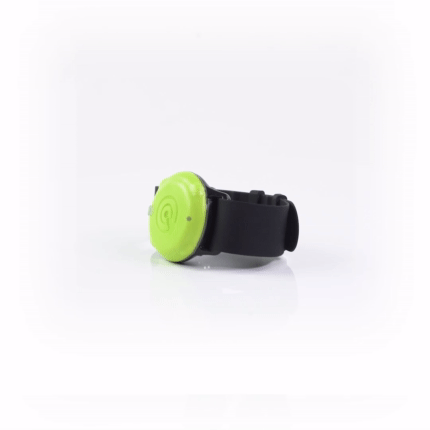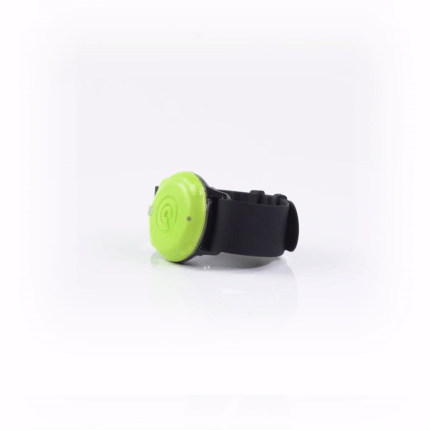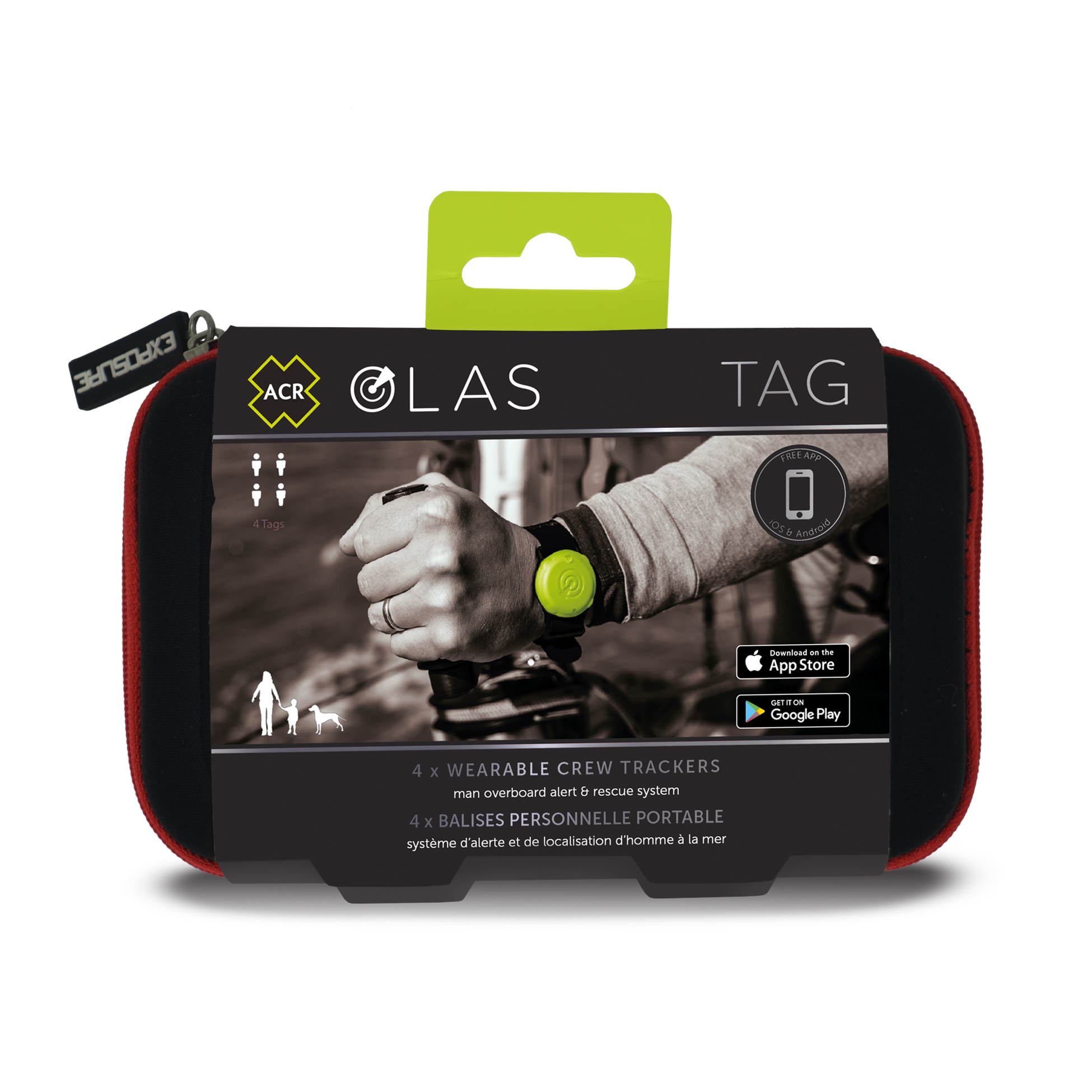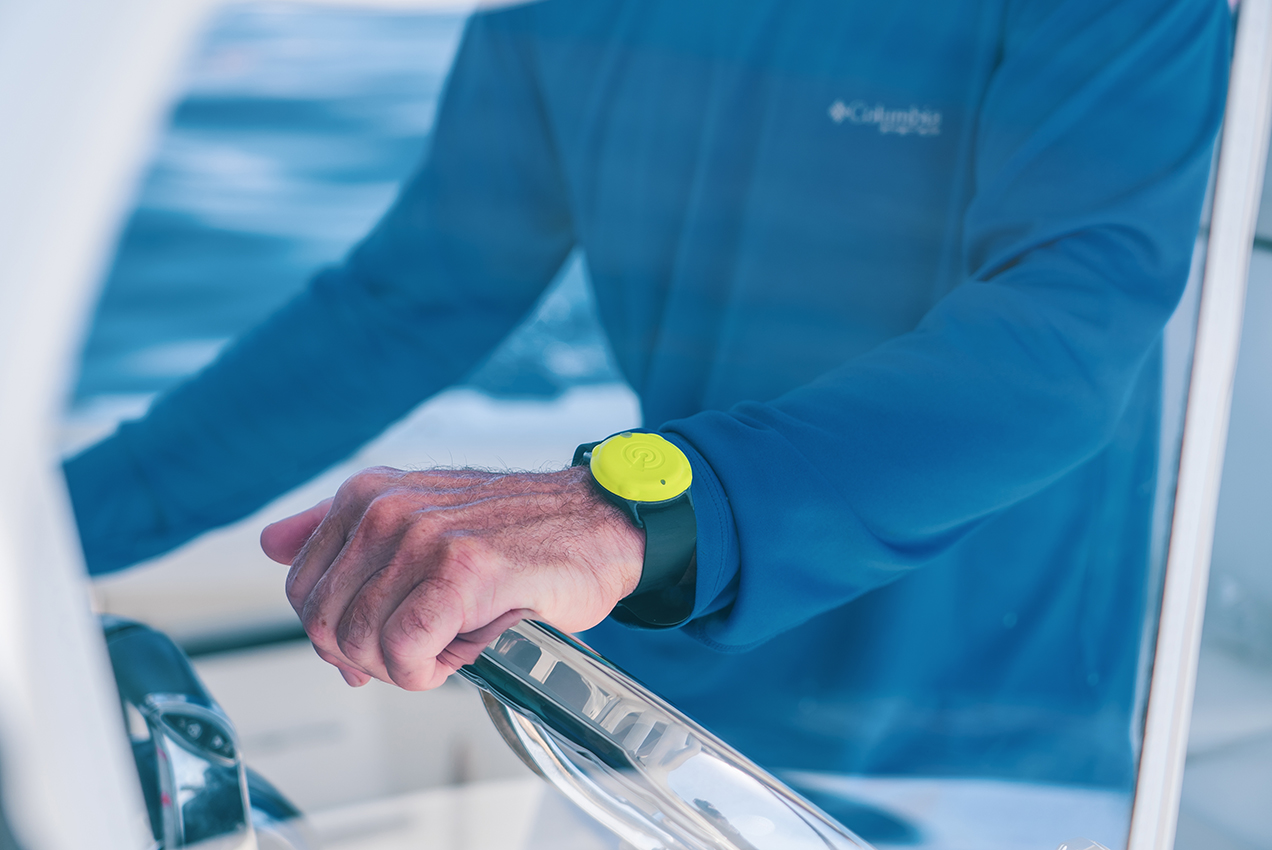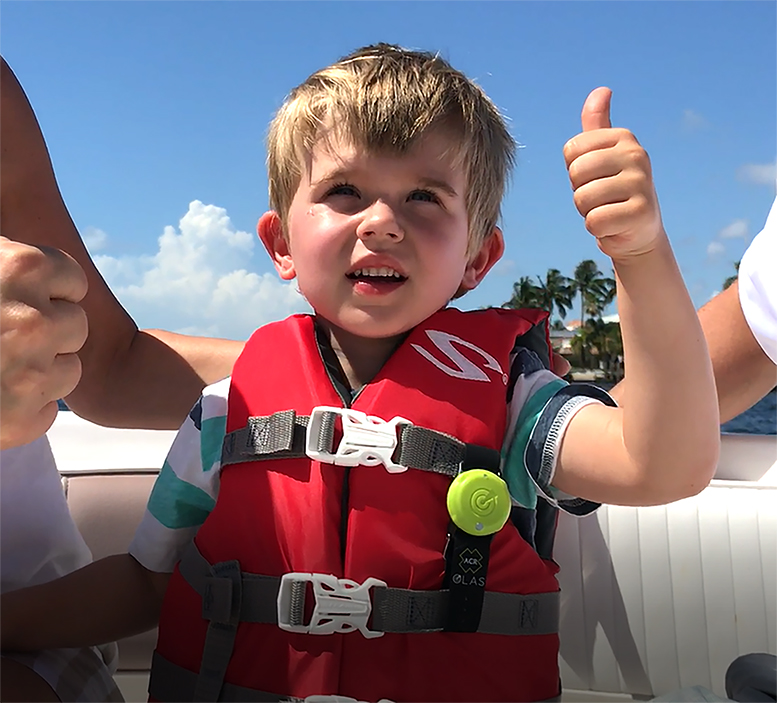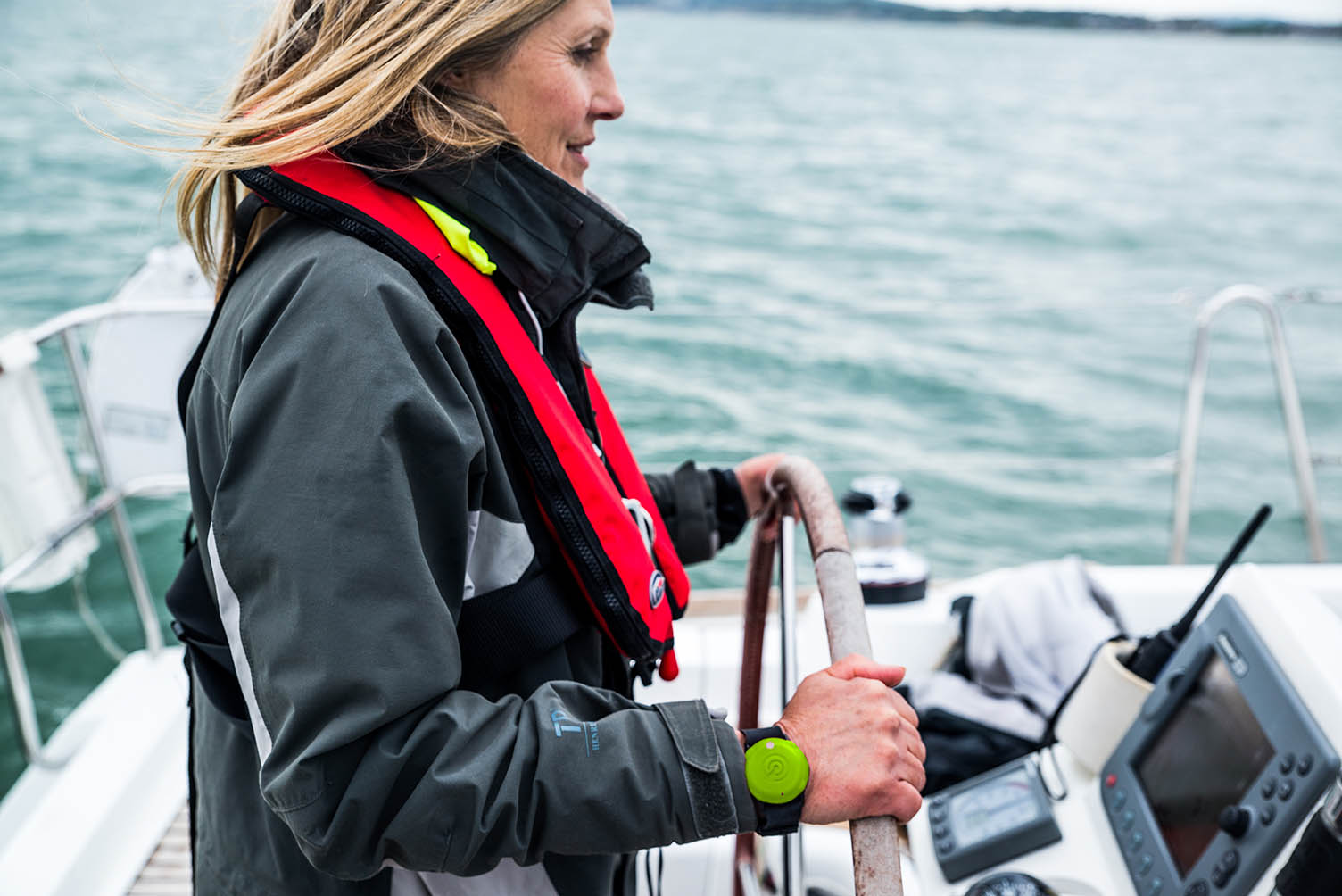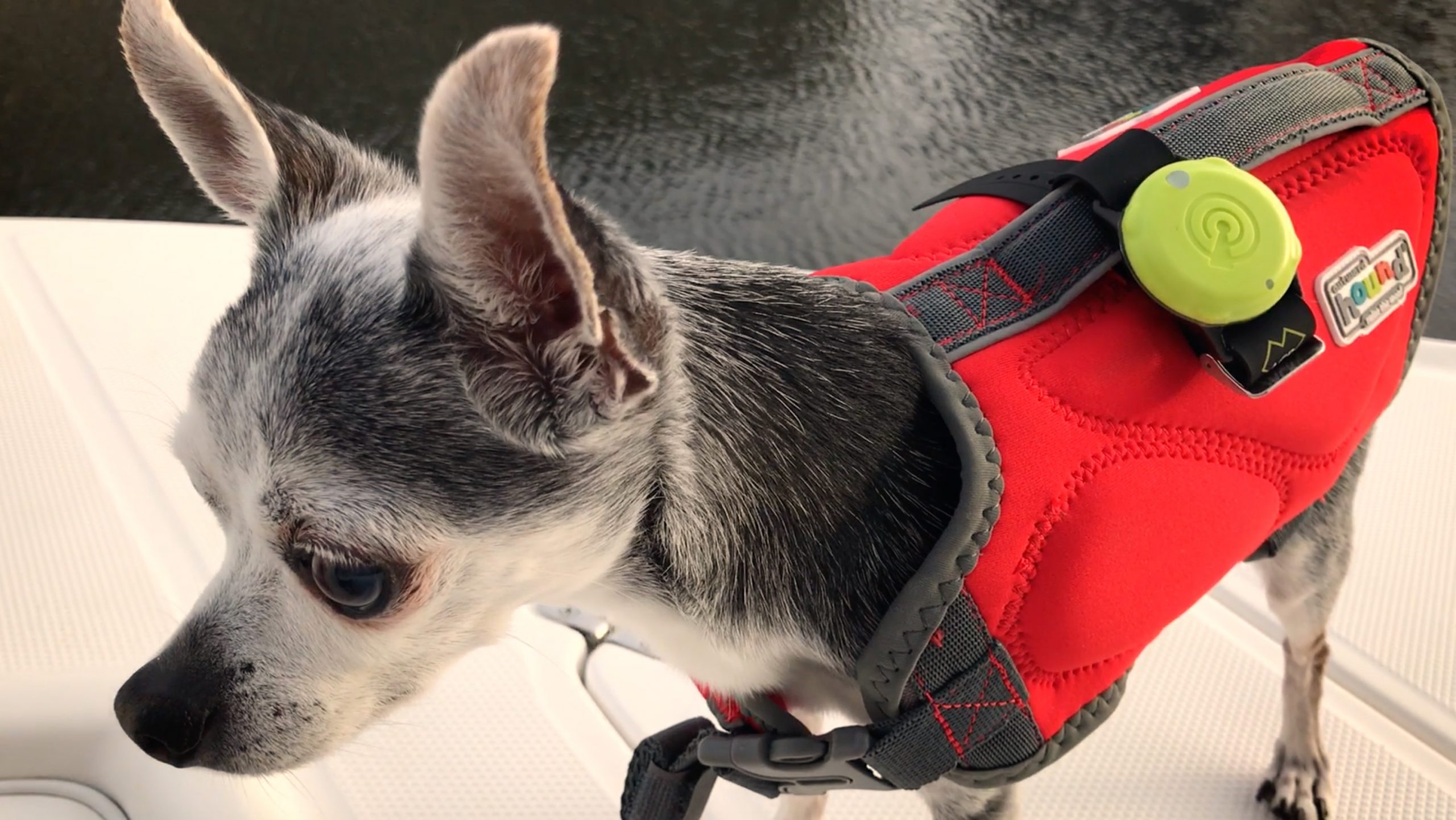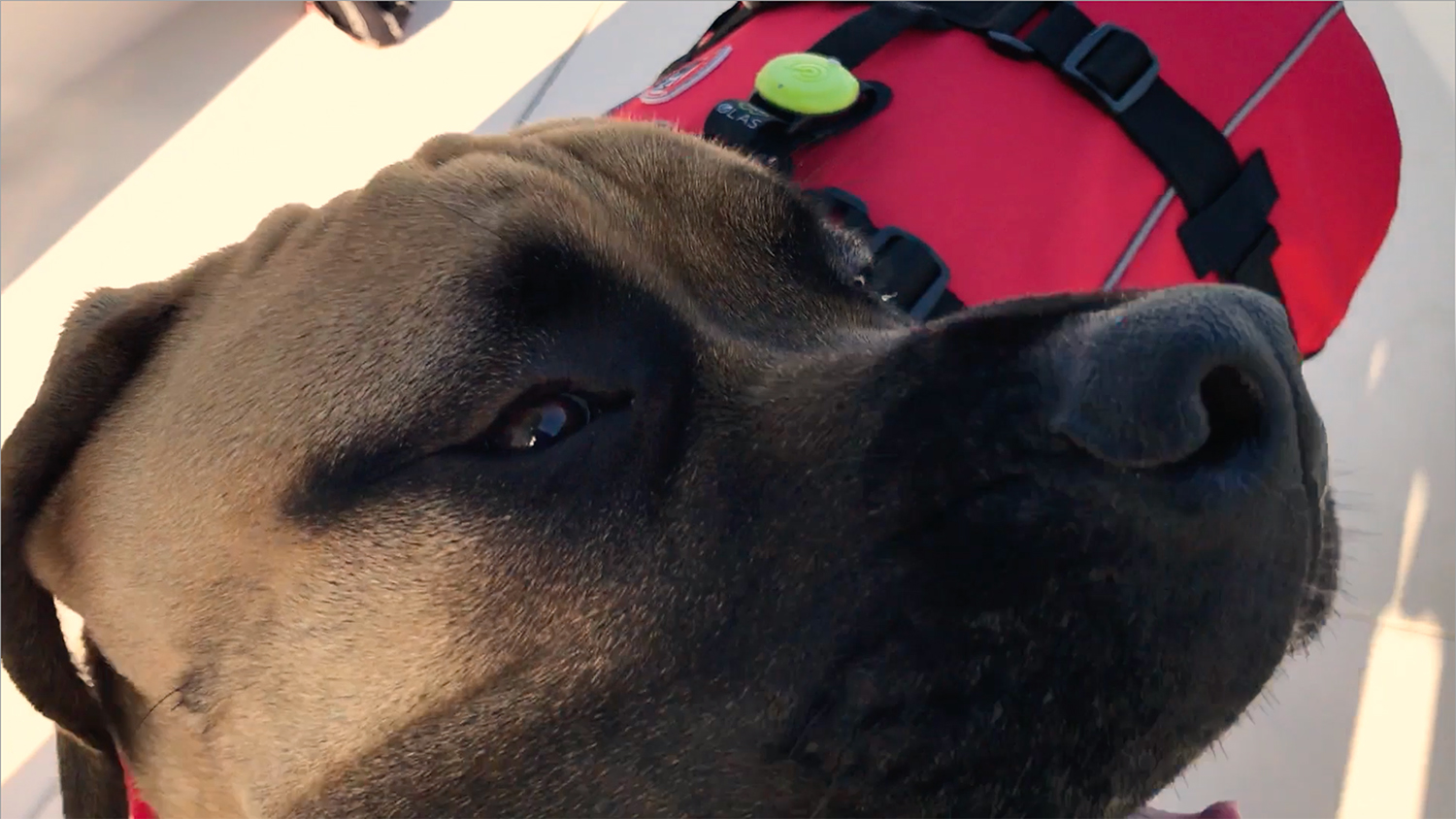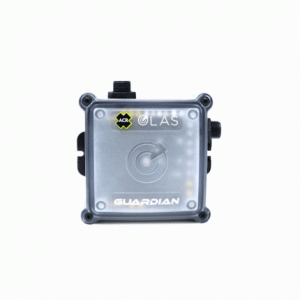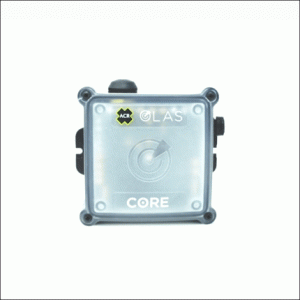What measures can I take to ensure the optimal performance of the OLAS technology in my ACR product:
- Do not connect other Bluetooth devices whilst using the OLAS app
- Ensure the OLAS app is at least 1 meter from other RF transmitting devices
- Select ‘Always’ for location access in your App settings
- Allow notifications
- Only 6 OLAS tags should be ON within range of the OLAS app
- Avoid carbon, metal, or water as this will block the OLAS data
- Always check connections before setting off
How do I switch the OLAS tag OFF?
Press and hold the button for 4 seconds until a red flash is seen opposite to the button. If in bright sun light you may need to shield the tag to see the red light.
Can I switch the OLAS tag OFF from the OLAS app?
NO this is not possible. Within the OLAS app you can pause the tag which means that the system will not react if the tag is switched off or goes out of range, however the tag continues to transmit when it is in pause mode within the OLAS app.
Should I turn the OLAS tag off when not in use?
We recommend that if your OLAS tag will not be used for an extended period i.e., longer than 1 week, you should switch it off between uses.
How can I check the battery status of the OLAS tag?
The OLAS app will indicate the battery status of the OLAS tag when on the home screen.
Can I change the battery in the OLAS tag?
Yes, the OLAS tag has a user replaceable battery CR2477. We recommend using a Panasonic version which is readily available online.
Can I swim with the OLAS tag?
Yes, the OLAS tag is waterproof down to 2 meters. However, it is not advised to swim below the waterline whilst wearing an OLAS tag.
Will the OLAS tag fit children?
The OLAS tag is supplied with a silicone wrist strap which has multiple fitting holes, comfortably fitting a circumference of 130mm up to 220mm. The Strap can also be removed and a different strap with a width below 23mm can be used. The tag can be attached to a lanyard or placed in an item of clothing.
Is the OLAS app, Core or Guardian alarm water activated?
No, the alarm is activated when the OLAS tag connection signal is blocked. In a MOB situation the signal is blocked by submerging the OLAS tag into water and/or by going out of range.
How can I check if the OLAS tag is ON or OFF?
The easiest way is to check using the OLAS app. If the tag does not appear on the home screen when in phone tracking mode, then it is switched off. Without using the OLAS app, you can press and hold the button. The tag will then either switch ON or OFF letting you know its previous and current status.
How many tags can I track only using the mobile app?
6 tags can be tracked. If more than 6 tags are switched on and within range of the OLAS app false alarms may occur.
How many tags can I track using the Core or Guardian?
Both the Core and the Guardian can track upto 25 OLAS tags at one time.
Can I use the OLAS tag with any OLAS receivers?
Yes, the OLAS tag is compatible with any OLAS receiver. They can be easily switched between OLAS systems.
Can the OLAS tags be transferred between OLAS receivers?
Yes, all OLAS tags can easily be used with a Core, Guardian or just the OLAS app without requiring any specific pairing.
The alarm is not triggered when I put the OLAS transmitter into a bucket of water?
The OLAS transmitter needs to be submerged by up to 4 inches in open water. If submerged in a bucket the wireless signal can transmit out of the side and bottom of the bucket.
If I switch the OLAS tag off will this trigger the alarm?
Yes, switching the OLAS tag off is the same as disconnecting the OLAS tag by falling overboard or submerging it in open water. We recommend testing the OLAS system regularly.
Can OLAS transmitters be tracked by multiple phones operating the OLAS app?
Yes, multiple mobile devices can operate the OLAS app and track the same OLAS transmitters. If tracking the OLAS transmitters via the Core or Guardian only 1 mobile device can be used.
Can the mobile device be below deck and the OLAS transmitters on deck?
Yes, but we always advise to check connection before leaving the dock to operate within your systems boundaries.
Do I need phone signal for the OLAS app to work?
No, the mobile app tracks OLAS transmitters using Bluetooth, which needs to be switched on. The mobile app also requires a GPS connection to use the GPS record and track elements from the MOB rescue screens.
If using the SOLO mode automated text message, then a minimum of 2G is required to send the message.
What is the minimum phone requirement?
iPhone 5 onwards / 3rd generation iPad onwards / Android 4.4+ / Bluetooth LE (The Bluetooth chip in some Android devices can vary, always check compatibility after purchase and return if not suitable).
What is the minimum iOS version required for the OLAS app?
- iOS 11 is the minimum operating system which will allow the OLAS app to run.
- iPhone 5 will not allow the OLAS app to download.
- iPhone 5S and iPhone 5SE and new versions of iPhone with iOS 11 operating system and above will allow the OLAS app to be downloaded.
Can the OLAS app be used on iPads?
The OLAS app can be used in landscape and portrait on iPads with the operating system iOS 11 and above.
What is the minimum operating system that can be used on Android devices?
Any Android device that can run 5.1 and above can download and run the OLAS mobile application. Tracking distance and reliability can vary depending on the Android devices hardware.
What is the maximum distance / Yacht size?
Direct tracking with the OLAS app is suitable for vessels up to 30ft.
Tracking via the Core or Guardian is suitable for vessels up to 50ft.
Tracking using additional Extenders is suitable for vessels up to 100ft.
Always test the range limitations to avoid false alerts.
Does the tag transmit GPS?
No, the GPS is taken from your mobile device running the OLAS app. It is recorded at the time of alarm, like pressing the MOB button on a chart plotter.
Where does the OLAS app direct back to?
The app is always directing back to the last known location of the OLAS tag i.e., the point at which the alert sounded.
What is the battery life?
If turned on and left on up to 4 months. Every time the OLAS tag is switched OFF/ON more power is used. On average around 3 months.
How many phones can use the OLAS app?
Any compatible phone can download the OLAS app.
The OLAS app is free of charge and will be updated regularly as and when technical advances are made.
Is the battery user replaceable?
On the OLAS tag yes, it uses a CR2477. On the OLAS Float-On and OLAS T2 the battery is rechargeable.
How many OLAS transmitters can be attached to 1 phone?
Up to 6 transmitters can be tracked. Ensure no more than 6 are within range of the phone to avoid false alarms.
Can I use a mixture of OLAS tags and OLAS Float-On’s?
Yes, you can use both connected on the same app. They will automatically indicate which is which.
How do you identify different tags?
When first purchased the tag or Float-on will have a number that will also be represented when it is seen in the app, the name of the tag or Float-On can then be changed. The app can also be used to revert to the original number.
How can I monitor the battery?
The OLAS tag indicates its battery status in the OLAS app. If the app is running when the level gets below 10% is indicated in the OLAS app.
The OLAS Float-On has battery indication using the traffic light system. When a charge is necessary it will illuminate solid red.
What happens if there are more than 6 OLAS transmitters around 1 device?
The 7th OLAS transmitter may push one of the previous 6 from the list causing a false alert. For this reason, only 6 devices can be used within range of the OLAS app.
What are the optimum OLAS app settings to avoid false alerts?
‘Always’ should be selected in your App settings and notifications should be allowed.
Can I have a different Bluetooth device connected?
No. If using the OLAS app it should not have any connections with external Bluetooth devices.
What is the proper method for testing my OLAS TAG or OLAS FLOAT-ON Transmitter in order to provide the most accurate representation of how the mobile app will communicate with the transmitter in a man overboard (MOB) scenario?
- Only test 1 OLAS TAG at a time
- Testing whilst on a moving vessel gives a more accurate representation of how the system operates. The test can also be carried out on land.
- Ensure the OLAS TAG you are carrying the test out with is either switched off to cause the alert or fully out of range by submerging in at least 6 inches of open water. Leave the TAG submerged for the entirety of the test. If the TAG is removed from the water or switched back on whilst still in range of the mobile device the TAG will reconnect and OLAS will resume normal tracking. Placing the TAG in a sink or glass of water will not work.
- You will see TAGS status change from Green reading “Immediate,” “Near,” or “Far” to Red reading “Paused” to “Unknown”
- After 8 to 12 seconds the alarm will sound
- Accept the alarm and then walk away from the TAG. A searching icon will appear to indicate that you are still within 20 meters of the point of loss and would be within visual contact of the man overboard (MOB)
- Having walked approximately 20 meters from the TAG, the searching icon will change to an arrow pointing back towards the point of loss. Continue walking for a further 20 meters, this will simulate the vessels onward movement prior to stopping and changing direction to perform a search and rescue
- When you reach around 40 meters from the point of loss turn around and follow the arrow
- Once back within 20 meters the searching icon reappears, this would indicate when you should initiate a search protocol based on the wind and tidal conditions
- Once back within the 20 meters either switch the TAG back on or remove it from the open water and it will automatically reconnect, cancelling the alarm (if tracking directly with the OLAS app). If tracking via a core or Guardian, the alarm need to be manually paused.
Troubleshooting
Problem: I keep on getting false alarms when the OLAS transmitters have not left the vessel.
Cause: False alarms occur due to a blocked connection between the OLAS mobile phone and the OLAS transmitter. Water, carbon, or metal can easily block the connection. Water in the human body can also block the connection.
Solution: Attached the transmitter to crew in a location which is always visible. If false alerts continue, try adjusting the alert time in Alert settings upto 15 or 30 seconds. However, this will delay the time in which you are alerted of the incident.
Problem: I have switched on the OLAS transmitter, but it does not show up on the OLAS app?
Cause: either the OLAS transmitter has a flat battery or the connection is blocked form your mobile device.
Solution: Try switching the OLAS transmitter ON/OFF/ON several times to check that the indication light is operating. If there is no indication light the battery will need to be changed (OLAS tag) or charged (OLAS Float-On). If the OLAS transmitter is switched on and transmitting i.e., all indication lights have been seen, then the mobile device needs to be checked to ensure Bluetooth and location setting are activated for the OLAS app.
